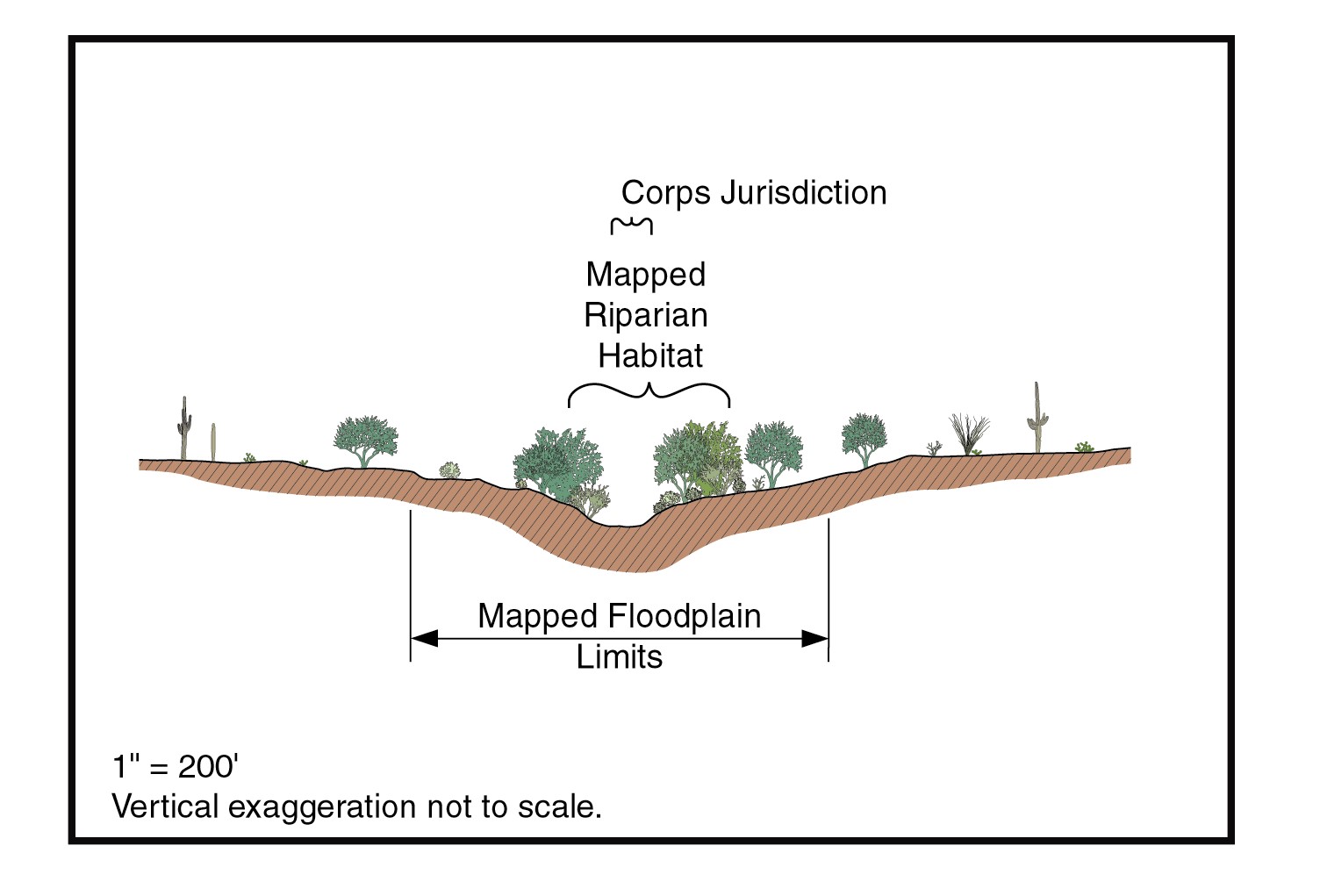Pima County’s Multi-species Conservation Plan integrates floodplain management with species protection, a logical step given that many federally protected species require access to floodplains for some part of their life cycle.
Two key provisions of the floodplain ordinance that provide species protection were adopted long before Pima County Regional Flood Control District sought an incidental take permit under the Endangered Species Act. Several Presidentially-declared disasters motivated Pima County to adopt erosion hazard regulations and maximum depth and velocity standards tailored to the largely ephemeral stream systems that dominate this large Western county. A third provision, requiring minimiza tion and mitigation of impacts to riparian vegetation, became part of the ordinance in the 1990’s. These measures have been very effective at reducing encroachment in the floodplain. Only later did the importance of these three measures for wildlife become apparent as biological studies were prepared for the Multi-species Conservation Plan.
tion and mitigation of impacts to riparian vegetation, became part of the ordinance in the 1990’s. These measures have been very effective at reducing encroachment in the floodplain. Only later did the importance of these three measures for wildlife become apparent as biological studies were prepared for the Multi-species Conservation Plan.
Local floodplain provisions maintain natural flood and sediment storage in erodible, semi-arid settings where water is scarce and vegetative cover is generally scant except along the floodplain. The provisions maintain water quality and vegetation connectivity and promote groundwater recharge to aquifer, as well as benefitting wildlife. The area affected by local floodplain management is much more extensive than is regulated by the U. S. Army Corps of Engineers under the Clean Water Act, as depicted above.
Habitat conservation planning was supported by regional riparian habitat mapping and prioritization which took into account not only the density of vegetation, but the type of vegetation, the availability of water and the degree of wildlife connectivity.
To learn more about Pima County’s Multi-species Conservation Plan, visit our website: www.pima.gov/mscp
Julia Fonseca, Pima County Office of Sustainability and Conservation

